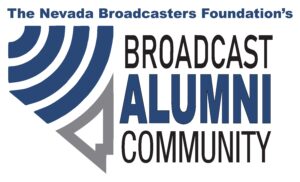Here are some of the regulatory developments of significance to broadcasters from the past week, with links to where you can go to find more information as to how these actions may affect your operations.
- Congress has thus far failed to pass any legislation to provide funding for government operations after the September 30 end of the fiscal year. If no legislation or “continuing resolution” that continues current funding levels is passed by Tuesday’s deadline, many government functions may be shut down or disrupted in October. In the past, the FCC has been able to remain open for a limited time after a government shutdown using some residual funds, but it is at this point unclear if that will be the case this time – or, even if the FCC can remain in operation, how long that operation can be sustained. Watch for more information in the coming days and be aware that the filing and processing of routine FCC applications could cease if there is a shutdown and the FCC’s funding is disrupted.
- ABC/Disney reinstated Jimmy Kimmel’s late-night show after it was suspended last week following FCC Chairman Carr’s apparent suggestion in a podcast interview that the FCC could penalize ABC/Disney if the company failed to discipline Kimmel over comments he made on Charlie Kirk’s assassination (actions we noted here). After the reinstatement, FCC Commissioner Gomez commended the company for finding “its courage in the face of clear government intimidation,” and vowed to “ensure local broadcasters have the independence to stand up to government threats.” Chairman Carr, on the other hand, denied that he had threatened ABC’s broadcast licenses, but stated that the FCC has a “unique role” in enforcing broadcasters’ public interest obligations. Carr also restated his belief that the national broadcast networks exert too much power and control over local TV stations. Nexstar and Sinclair, the two ABC affiliates that pulled Kimmel’s show last week and did not immediately reinstate it, began airing the program again on Friday, with Sinclair stating that, it was satisfied with its discussions with ABC about Sinclair’s proposals that the network adopt measures to strengthen accountability, viewer feedback, and community dialogue, including a network-wide independent ombudsman; and Nexstar attributing its actions to its obligation “to be stewards of the public airwaves and to protect and reflect the specific sensibilities of our communities.” It stated that its actions were not the result of government action, and that it “remains committed to protecting the First Amendment while producing and airing local and national news that is fact-based and unbiased.”
- The FCC’s Space Bureau announced that September 26 was the effective date of the FCC’s new streamlined application procedures for adding a point of communication to an earth station license. The FCC made this change in its August Second Report and Order along with other rule changes made to streamline and expedite earth station application processing. The FCC noted that the new procedures for adding a point of communication to an earth station license applied to both new and currently pending earth station applications, and applicants with pending applications may utilize these streamlined procedures by notifying FCC staff that they want to do so.
- The FCC’s Media Bureau released an updated application filing fee guide for applications filed with the Bureau, including by broadcasters. The guide reflects the updated filing fees that are currently in effect and were adopted by the FCC earlier this year to reflect changes in the Consumer Price Index (see our discussion here).
- The FCC’s Media Bureau announced pleading deadlines on the applications proposing Gray Media’s acquisition of TV stations from Sagamore Hill Broadcasting, Block Communications, and Allen Media. The applications would create Top-4 station combinations in in the following DMAs: Lubbock, TX; Columbus, GA; Louisville, KY; Huntsville-Decatur (Florence), AL; Paducah-Cape Girardeau-Harrisburg, MO-IL; Evansville, IN; Fort Wayne, IN; Montgomery, AL; Lafayette, LA; and Rockford, IL. The Bureau noted that although Gray’s proposed acquisitions violate the Top-4 Prohibition (the prohibition on broadcasters owning two or more of a DMA’s Top-4 affiliated TV stations), the U.S. Court of Appeals for the Eighth Circuit vacated that rule in July (see our Broadcast Law Blog article on the Court’s decision here), which is anticipated to take effect on October 21. Gray requests a grant of these combinations on a case-by-case basis or by waiver if for any reason the Eighth Circuit’s decision does not become effective as anticipated.
- The FCC announced that comments and reply comments are due October 22 and November 6, respectively, responding to the FCC Media Bureau’s Notice of Proposed Rulemaking seeking comments on a petitioner TV station’s proposed substitution of Channel 33 for Channel 8 at Hutchinson, Kansas due to a long history of VHF reception issues among petitioner’s viewers.
Watch for a post early in the week highlighting October regulatory dates and deadlines for broadcasters (assuming that those dates are not affected by the possible federal government shutdown mentioned above).


